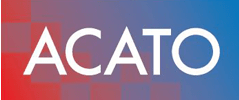Conducting an Internal Audit Process for ISO 27001 Success

How to Conduct an Internal Audit for ISO 27001: Step-by-Step Process and Key Requirements
An internal audit for ISO 27001 is a systematic evaluation of an organization’s Information Security Management System (ISMS) that identifies non-conformities and drives continuous improvement. By reviewing policies, controls, and evidence against Clause 9.2 requirements, an internal audit process for ISO 27001 enhances risk management and strengthens cyber-resilience from the first review cycle. This guide covers what an internal audit entails, the core requirements of Clause 9.2, a detailed seven-stage audit process, essential documentation, and best practices for achieving impartial, effective results. For an overview of the overall ISO 27001 certification journey, see ISO 27001 Process – Acato.
What Is an ISO 27001 Internal Audit and Why Is It Important?
An ISO 27001 internal audit is an independent, planned activity that assesses whether an ISMS conforms to the standard and operates effectively to manage information security risks. This evaluation mechanism uncovers gaps in controls and drives corrective actions that uphold certification requirements and improve overall security posture while aligning the ISMS with organizational objectives.
What defines an ISO 27001 internal audit?
An internal audit defines scope, criteria, and objectives for reviewing an ISMS by examining documented information, interviewing stakeholders, and testing controls. It establishes whether policies and procedures satisfy ISO 27001 clauses and Annex A security controls, creating a basis for corrective actions and preventive measures. An internal audit serves a crucial function in the management and improvement of an Information Security Management System (ISMS). By clearly defining the scope, criteria, and objectives, the internal audit process allows for a comprehensive review of the ISMS. This is achieved through a meticulous examination of documented information, stakeholder interviews, and the testing of controls. Such an approach not only ensures that the ISMS is functioning effectively but also provides insights into areas that may need enhancement or rectification. This systematic process is instrumental in assessing whether policies and procedures align with the requirements set forth in ISO 27001 clauses and Annex A security controls.
Additionally, the findings from an internal audit create a foundation for implementing corrective actions and preventive measures. By identifying gaps and inefficiencies within the ISMS, organisations can proactively address potential vulnerabilities before they escalate into serious issues. The audit process fosters a culture of continuous improvement, encouraging stakeholders to engage in ongoing dialogue about security practices and compliance. As a result, the internal audit not only safeguards the integrity of information assets but also reinforces the organisation’s commitment to maintaining a robust security posture, thus enhancing overall trust and credibility with clients and stakeholders alike.
Why conduct internal audits for ISO 27001 compliance?
Conducting regular internal audits delivers three primary benefits:
- Compliance Assurance – Validates alignment with ISO 27001 requirements and regulatory obligations
- Risk Identification – Reveals vulnerabilities in processes, controls, and governance frameworks
- Continuous Improvement – Drives corrective actions that enhance ISMS maturity and resilience
These outcomes feed directly into management review and lay the groundwork for strategic risk-based refinements. In today’s dynamic business environment, organisations continuously seek to enhance their operational efficiency and strategic alignment. A crucial aspect of this process involves the integration of performance outcomes into management reviews. These outcomes provide valuable insights that facilitate a comprehensive understanding of the organisation’s strengths and weaknesses. When systematically analysed, they inform decision-makers about how effectively the current strategies are impacting overall performance. This data-driven approach helps management to identify areas requiring further attention, ultimately feeding into the broader management review framework.
Moreover, the insights gathered from performance outcomes lay the groundwork for strategic risk-based refinements. By mapping these outcomes against potential risks, management can assess not only the effectiveness of existing strategies but also the risks associated with their execution. This layered analysis supports a proactive rather than reactive approach to risk management, enabling leaders to refine their strategies accordingly. By embedding these insights into the strategic planning process, organisations can navigate uncertainties more adeptly, ensuring that they remain resilient and responsive in an ever-evolving marketplace. Thus, the integration of performance outcomes into management reviews not only strengthens operational oversight but also contributes to a risk-aware culture that drives sustainable growth.
How do internal audits support ISMS effectiveness and continuous improvement?
Internal audits support ISMS effectiveness by measuring control performance, verifying risk treatment plans, and ensuring documented information remains current. By integrating findings into management review cycles, organizations promote a culture of continual enhancement and sustained compliance. Internal audits play a crucial role in bolstering the effectiveness of Information Security Management Systems (ISMS) by systematically measuring control performance, verifying the implementation of risk treatment plans, and ensuring that documented information remains up-to-date. Through a structured evaluation of security controls, audits provide organisations with a clear insight into the adequacy and effectiveness of their security measures. This process not only identifies potential vulnerabilities but also confirms that the controls in place are functioning as intended. By cross-referencing risk treatment plans, internal audits ensure that the strategies designed to mitigate risks are being executed properly, ultimately enhancing the overall security posture of the organisation.
Moreover, the integration of audit findings into management review cycles fosters a culture of continual improvement and sustained compliance. By regularly reviewing and acting on audit outcomes, organisations can refine their security policies and ensure they remain aligned with the evolving threat landscape and regulatory requirements. This proactive approach not only mitigates risks but also reinforces a commitment to information security at all organisational levels. Consequently, by embedding audit processes within the organisational framework, companies not only promote a robust ISMS but also illustrate their dedication to maintaining transparency and accountability in their information security practices.
What Are the Core ISO 27001 Internal Audit Requirements Under Clause 9.2?
Clause 9.2 mandates that organizations plan, establish, implement, and maintain an audit programme with defined intervals, scopes, and criteria. It requires auditor objectivity and impartiality, formal reporting to management, and retention of documented information as evidence of audit activities and outcomes.
- Planned intervals and audit programme requirements ensure systematic coverage of all ISMS elements over time.
- Auditor objectivity and impartiality are achieved by assigning personnel without direct responsibility for audited areas.
- Documented information includes audit plans, checklists, reports, records of findings, and evidence of corrective actions.
These requirements maintain transparency and credibility throughout the internal audit cycle, enabling meaningful management review. In the realm of internal auditing, maintaining transparency and credibility is paramount. These requirements establish a framework that ensures all activities are conducted with integrity and accountability throughout the audit cycle. By adhering to stringent guidelines and standards, auditors can present findings that are not only reliable but also comprehensible to management. This clarity fosters an environment where stakeholders can engage with the audit process meaningfully, facilitating productive discussions on risk, compliance, and overall organisational health.
Moreover, the emphasis on transparent practices underscores the importance of thorough documentation and clear communication. Such an approach enables management to conduct informed reviews of audit results, effectively assessing the implications and necessary actions. When auditors document their methodologies and rationale behind findings, they contribute to a culture of trust and openness. This, in turn, empowers management to make data-driven decisions, ultimately supporting the organisation’s strategic goals and enhancing overall performance. Thus, the integration of transparency and credibility within the internal audit cycle is not merely a regulatory obligation but a crucial element in fostering a resilient organisational framework.
ISO 27001 Internal Audit Requirements
Clause 9.2 of the ISO 27001 standard mandates that organizations conduct internal audits at planned intervals to assess their Information Security Management System (ISMS) and ensure it meets the standard’s requirements. These audits must be performed by impartial auditors and documented to provide evidence of audit activities and outcomes.
Clause 9.2 of the ISO 27001 standard plays a critical role in maintaining the integrity of an organization’s Information Security Management System (ISMS). It mandates that internal audits are conducted at predefined intervals, allowing organisations to systematically assess whether their ISMS continues to meet the stringent requirements set by the standard. This proactive approach not only highlights areas in which the system performs well but also identifies potential weaknesses or areas requiring improvement. By ensuring that audits are scheduled regularly, organisations can maintain compliance, protect sensitive information, and continuously enhance their security posture.
Additionally, the standard stipulates that these audits must be carried out by impartial auditors. This is essential to ensure objectivity and credibility in the audit process, as it helps to eliminate any potential biases that could arise if individuals involved in the day-to-day operations of the ISMS were to conduct the assessments themselves. Documenting the audit activities and outcomes is equally crucial, as it provides tangible evidence that the organisation is effectively monitoring and reviewing its ISMS. These records not only serve as a reference for future audits but also demonstrate compliance with the standard during external assessments or audits. Thus, Clause 9.2 reinforces the importance of regular, unbiased evaluations in fostering a robust information security management framework.
What Are the Step-by-Step Stages of the ISO 27001 Internal Audit Process?
The ISO 27001 internal audit process is crucial for organisations seeking to establish, implement, maintain, and continually improve their information security management systems (ISMS). This structured approach involves several clearly defined stages that ensure compliance with the ISO 27001 standards and facilitate the identification of areas for improvement. The first step is typically the planning phase, where the audit scope is determined, objectives are set, and the audit criteria are established. During this phase, it is also essential to develop an audit plan that outlines the timelines, resources, and personnel involved, ensuring that all relevant areas of the ISMS are covered.
Following the planning stage, the audit process moves into the execution phase, which includes collecting and evaluating evidence through interviews, document reviews, and direct observations. Auditors assess whether the ISMS adheres to both internal policies and external requirements, aiming to identify any non-conformities or areas of non-compliance. Once the audit is complete, the next stage involves reporting the findings: auditors compile a comprehensive report detailing both strengths and weaknesses, alongside recommendations for corrective actions. Finally, the audit closes with a follow-up phase wherein the organisation must address the identified issues and implement necessary changes. This structured approach not only ensures that the organisation complies with ISO 27001 standards but also fosters a culture of continuous improvement in information security management.

A structured internal audit process follows seven stages that drive clarity and accountability from scoping to follow-up.
- Define Audit Scope and Criteria – Establish boundaries and objectives based on ISMS scope and risk assessment.
- Develop an Effective Audit Plan and Programme – Schedule audit activities, allocate resources, and set timelines.
- Select and Prepare Internal Auditors – Ensure auditors hold ISO 27001 Lead Auditor competence and remain impartial.
- Conduct Documentation Review and Field Audit Activities – Examine records, interview process owners, and observe control implementation.
- Analyze Findings and Identify Non-conformities – Classify issues by severity and reference specific ISO 27001 clauses.
- Prepare the Internal Audit Report – Summarize scope, objectives, findings, root causes, and recommended corrective actions.
- Present Audit Results and Conduct Management Review – Deliver reports to leadership and align on follow-up actions and deadlines.
This clear sequence promotes consistency and supports a robust feedback loop that informs corrective action plans and reinforces ISMS effectiveness.
What Key Documentation Supports ISO 27001 Internal Audits?
Effective internal audits rely on precise, up-to-date documentation that guides evidence collection and demonstrates compliance.
| Document | Purpose | Application |
|---|---|---|
| Audit Checklist | Ensures comprehensive coverage of requirements | Guides fieldwork and prevents oversight |
| Statement of Applicability (SOA) | Maps Annex A controls to organizational scope | Validates which controls are in scope |
| Risk Assessment and Treatment Plan | Identifies potential risks and mitigations | Informs audit focus and control testing |
| Internal Audit Report | Records findings and recommendations | Provides management with actionable insights |
Key Documentation for ISO 27001 Audits
Effective internal audits are underpinned by a range of specific documentation that plays a crucial role in guiding the auditing process. Key documents such as an audit checklist, a Statement of Applicability (SOA), a risk assessment and treatment plan, and an internal audit report serve as foundational tools within the audit framework. The audit checklist ensures that all critical areas are assessed systematically, while the SOA outlines which controls are applicable to the organisation’s specific context, thus establishing a clear focus for the audit. Furthermore, a comprehensive risk assessment and treatment plan enables auditors to identify potential vulnerabilities and determine appropriate measures for mitigating risks, ensuring that all necessary precautions are in place.
These documents not only facilitate the collection of evidence but also serve to demonstrate compliance with established standards and regulations. By maintaining thorough documentation, auditors can ensure consistency throughout the audit cycle, allowing for accurate reporting and transparent communication of findings. The internal audit report, which synthesises the results of the audit, provides valuable insights into the organisation’s performance and compliance status. Collectively, these elements contribute to a robust internal audit process that enhances overall organisational governance, risk management, and operational efficiency. Consequently, the reliance on well-structured documentation cannot be overstated, as it lays the groundwork for meaningful audits that drive continuous improvement and accountability.
What Are Best Practices for Conducting Effective ISO 27001 Internal Audits?

Implementing best practices elevates audit quality, reinforces impartiality, and drives strategic improvements.
- Ensure Auditor Competence and Maintain Impartiality – Assign qualified lead auditors with no conflicting responsibilities.
- Apply a Risk-Based Approach During Internal Audits – Focus audit activities on high-risk processes and critical Annex A controls.
- Leverage Technology and Automation – Use data analytics, audit management software, and automated checklists to streamline evidence collection and reporting.
By combining expert auditors with targeted risk analysis and modern tools, organizations enhance audit efficiency and reinforce compliance culture. Strong internal auditing practices not only uphold ISO 27001 certification but also embed continual improvement into information security governance.
